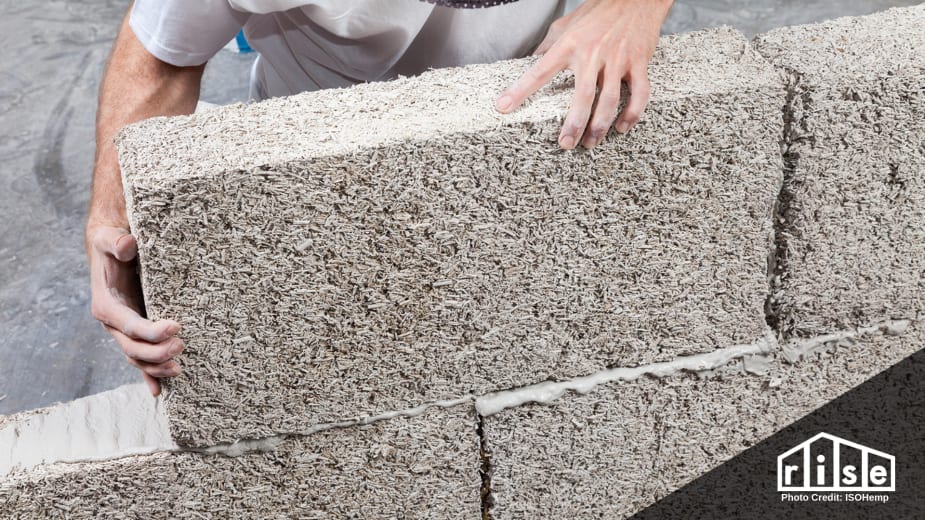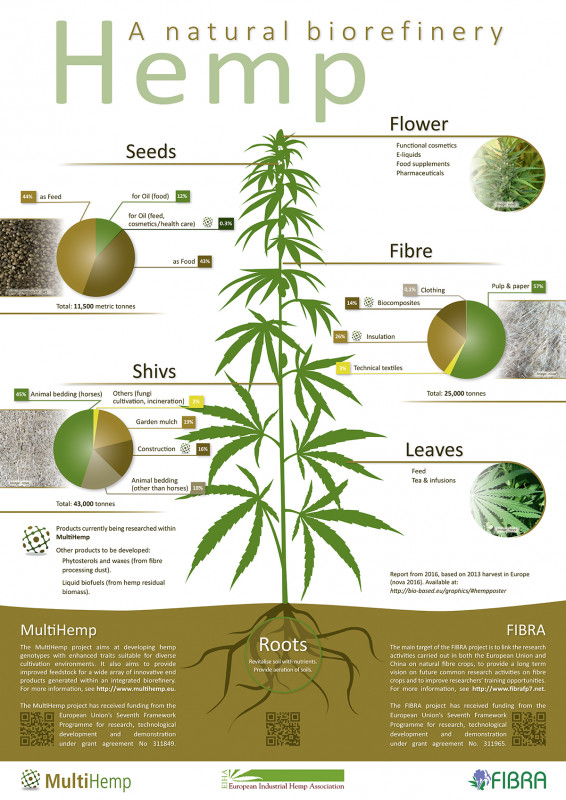 From its nutritional seeds to its healing oils, hemp seems to be a plant of endless utility. And now, researchers have found another use for hemp.
From its nutritional seeds to its healing oils, hemp seems to be a plant of endless utility. And now, researchers have found another use for hemp.
“Hempcrete,” a building material made of hemp fibers, is considered an environmentally-friendly construction material.
Let’s take a look at this discovery, as well as why some people are against it.
The Benefits of Hempcrete
Hempcrete has the potential to compete with and perform better than current building materials.
 It is immune to molds and pests, is fireproof, and is a great heat and moisture absorber. It is also more inexpensive than currently used insulators. And unlike concrete and cement, hempcrete absorbs carbon dioxide instead of generating it.
It is immune to molds and pests, is fireproof, and is a great heat and moisture absorber. It is also more inexpensive than currently used insulators. And unlike concrete and cement, hempcrete absorbs carbon dioxide instead of generating it.
Hempcrete can absorb 307 kilograms of CO2 per cubic meter – equal to the emission from three refrigerators.
As an eco-friendly material, hempcrete also reduces the waste caused by construction. Concrete makes up a major part of the debris created by construction and demolition. Hempcrete can replace non-structural portions of buildings normally built with concrete.
Limitations of Hemp
Yet hempcrete is not without its limitations. One issue is how long hempcrete takes to dry, as it can extend the time needed during construction.
Concrete outperforms hemp in compression strength. Concrete can handle compressions up to 20 MPa (megapascals), while hempcrete withstands 3 MPa. This means hempcrete is better as an insulator than stand-alone building material.
There are also issues with availability. Only a dozen or so hemp processing plants produce hempcrete, most of them located in Europe.
Hempcrete is also controversial because of its relative, Cannabis Sativa L. This plant is known for creating recreational cannabis and marijuana. While hemp is not the same, hemp-growing is still restricted within the US. The negative connotation of the plant species is unappealing to farmers and investors.
However, advocates of hempcrete are hopeful for hemp's future. North Carolina currently contains the first hemp-made home, and a company in Washington is refitting homes with hempcrete, among many others. As more hemp businesses take root in the US, the market for hemp buildings is expected to become more profitable.
As a more sustainable material, hempcrete is at the forefront of eco-friendly buildings. Could you imagine yourself buying or living in such a house in the future?
Sources: NY Times, Hemp Foundation, Ensia







